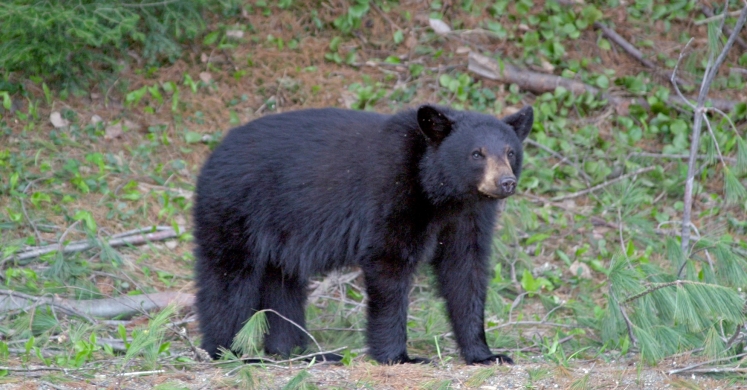Blog

#bioPGH Blog: Fat Bear Time!
 A resource of Biophilia: Pittsburgh, #bioPGH is a weekly blog and social media series that aims to encourage both children and adults to reconnect with nature and enjoy what each of our distinctive seasons has to offer.
A resource of Biophilia: Pittsburgh, #bioPGH is a weekly blog and social media series that aims to encourage both children and adults to reconnect with nature and enjoy what each of our distinctive seasons has to offer.
As we turn the calendar page into October, our wild communities begin their annual preparation for winter. For some, that means migrating south, for others, it means dropping their leaves, and for some — it means doing everything possible to become a roly-poly, fat bear! I don’t know if you keep up with the National Park Service’s annual Fat Bear bracket challenge, but it’s quite an entertaining way to explore some interesting bear biology. Our black bears (Ursus americanus) here in Pennsylvania don’t have to bulk up quite to the extreme lengths (or should I say girths?) of an Alaskan brown bear, but the natural processes leading up to hibernation are still fascinating to explore!
First, the interesting thing about hibernation is that it is not exactly a response to cold weather. Hibernation is actually triggered by low resource availability — it’s an adaptive response to summer’s food supply running low. Once foraging (searching for food) costs the bears more energy than what’s available in the landscape, bears’ bodies make the decision for them. As they begin “denning” in either an excavated hollow or something that resembles a nest, their metabolisms drops dramatically, and their heart rates and body temperatures lower slightly — the physical hallmarks of hibernation.
In our general region (Western Pennsylvania and the surrounding area with similar habitat types), the timing of black bears’ hibernation correlates with the abundance of acorns produced in a given year. If the bears have a solid supply of acorns, they will delay hibernation until they reach the point of that energy trade-off we mentioned earlier, but generally the first bears to begin hibernation (pregnant females) will begin denning mid-November while males follow suit a few weeks later. Their fat reserves must then last them until late winter or early spring. (I should note, though, bears don’t “sleep” as deeply as animals like groundhogs, for example. They can get up and move around if needed, and they can be quite aware of their surroundings.)
If the thought of a paunchy, pre-hibernation bear is intriguing, check out the National Park Service’s Fat Bear Week, featuring the brown bears of Katmai National Park! The park tracks different notable bears, and you can vote for your favorite bruin who can pack on the pounds. Our black bears do need to plump up for the colder months, but it’s nothing compared to these chubby buddies who bulk massively in preparation for a much more brutal winter. Meet the bears of Fat Bear Week below (I’m partial to last year’s winner Holly), and don’t forget to vote for your favorite bear with the National Park Service!
Continue the Conversation: Share your nature discoveries with our community by posting to Twitter and Instagram with hashtag #bioPGH, and R.S.V.P. to attend our next Biophilia: Pittsburgh meeting.
Image Credits: cover, USFWS—Northeast CCY-BY 2.0; header, Pexels CC0

